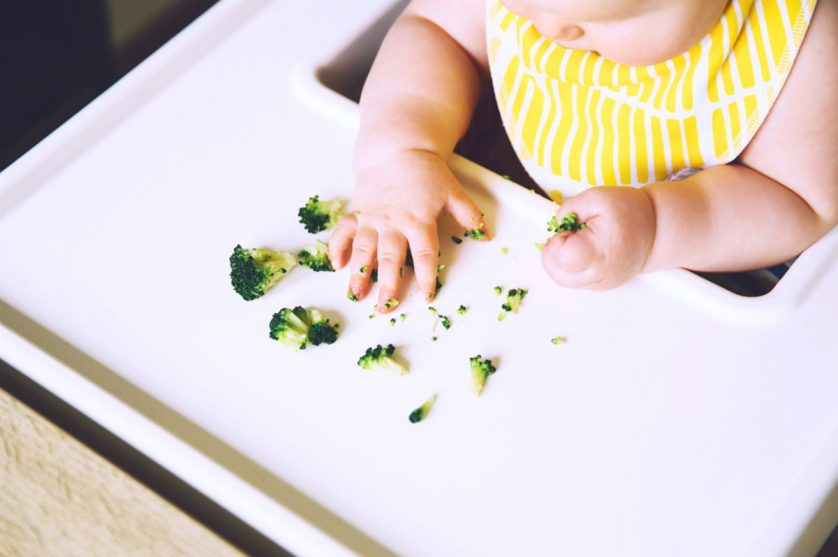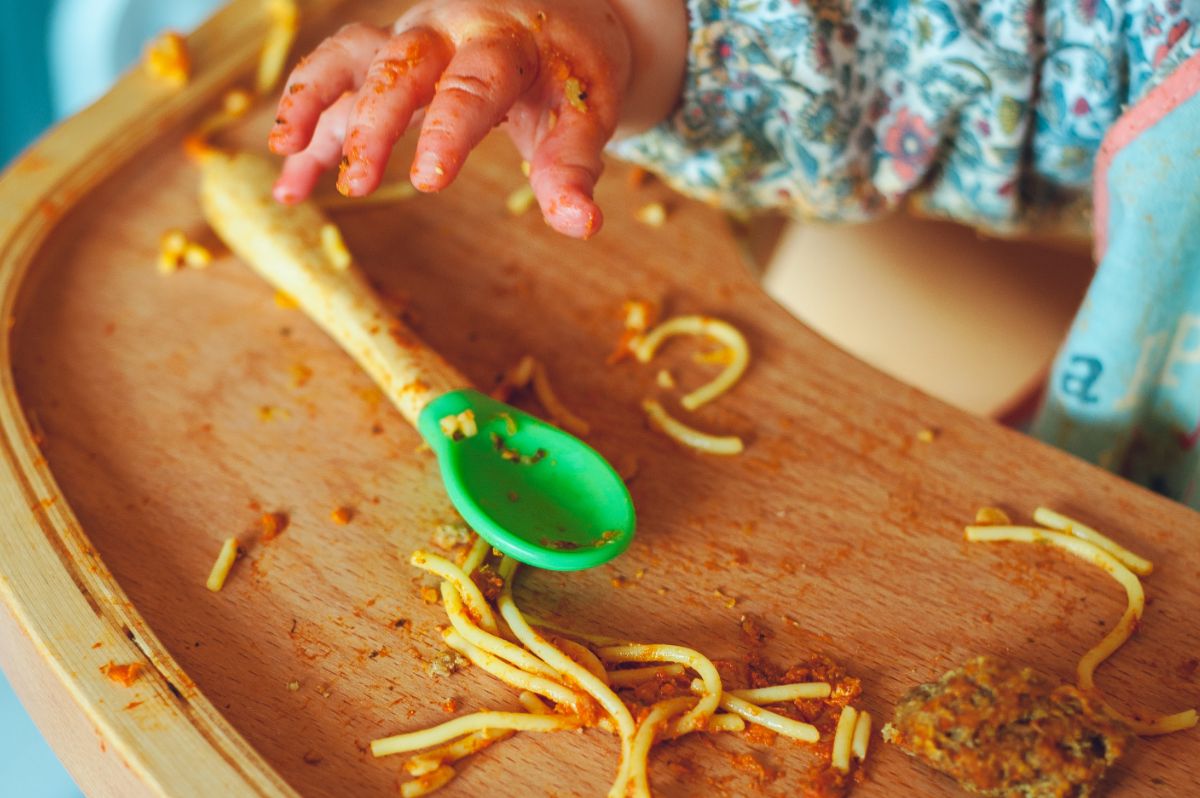How to Start Baby-Led Weaning (& Why You Should Consider It)

Move over parents – it’s time for your baby to take charge during mealtimes! Through baby-led weaning, parents are passing on purees and spoon feeding and opting for a finger food approach to introducing solids instead. Keep reading to learn more about this alternative meal time concept, including the benefits it can provide, how to start, and what foods to serve.
What is Baby-Led Weaning?
Baby-led weaning is a method of introducing your baby to solids. With this method, purees are skipped entirely, and babies are given finger foods instead. During baby-led weaning, your little one is in complete control of how they eat, what they eat, and how much they eat. The overall goal of this concept is to give your baby more independence as they get familiar with solids. They’ll be trusted to eat when they’re hungry and encouraged to eat with their fingers or with some baby-approved utensils as they get older.
Benefits of Baby-Led Weaning

Baby-led weaning has been practiced for over a decade, oftentimes by parents who are trying to avoid raising a picky eater. But raising a child who eats a variety of foods isn’t the only possible outcome of baby-led weaning. Here are just a few more benefits of baby-led weaning:
Independence: Your baby will learn to eat on their own and decide what they want to eat and what they don’t.
Development: Picking up food with their hands and playing with utensils helps develop fine motor skills.
Appetite Control: Your baby will learn to eat when they’re hungry and stop when they’re not.
Valuable Family Bonding Time: Your family can eat meals together, since oftentimes, your baby is able to eat what the rest of the family is also eating, just slightly modified.
When to Start Baby-Led Weaning
A good rule of thumb is to start thinking about baby-led weaning when your baby can sit up by themselves and grab/hold things. This is usually around the six-month mark and is also when they drop the tongue-thrust reflex and are developed enough to absorb solids.
If you’re unsure, you can always check in with your child’s doctor to ensure they are cleared for baby-led weaning before you start.
How to Start Baby-Led Weaning

Starting your baby on solids with any method can be daunting for nervous parents. Here are our top tips for successful baby-led weaning:
Continue Nursing or Bottle Feeding: Babies will continue to get most of their nutrients from breastmilk or formula until their first birthday.
Prepare the High Chair: You’ll place your baby in a high chair and serve the food straight on the tray (don’t worry about plates just yet!). Invest in a floor covering for when baby-led weaning gets messy.
Serve at Mealtime: Work your way up to serving your baby three meals a day. Start with once a day, then twice, then three times as they get more used to the routine change!
Keep Portions Small: Aim to keep portion sizes the size of your baby’s fist.
Keep Food Soft: Any food you offer your baby needs to be soft enough to squish between your fingers. Avoid anything hard, round, crunchy, or sticky (think raw nuts, raw apple, raw carrot, nut butter, grapes, cherry tomatoes, honey, etc.)
Don’t Overwhelm: Only introduce your baby to one food at a time to begin with. Putting too much food or too many different foods on the tray could overwhelm them.
Get Creative: Try to introduce your baby to all kinds of textures and flavours during baby-led weaning and offer a food multiple times, even if they dislike it at first.
Don’t Intervene: The goal of baby-led weaning is for your baby to learn to self-feed, so try not to help them grasp foods or put the food into their mouths.
Don’t Push It: Once your baby starts turning their head away from the food or fussing, consider mealtime over. Remember, they’re still continuing with breastfeeding or formula feeding, so they don’t need to clear the tray!
Which Foods To Start Baby-Led Weaning With

Here are just a few of the best foods to start with for baby-led weaning:
- Roasted sweet potato wedges
- Boiled or steamed broccoli or carrots
- Strips of soft avocado (Tip: coat slippery foods like avocado in flaxseed to make it easier to grip)
- Slices of mango
- Half a banana with the peel on
- Beans or peas, slightly mashed
- Minced meat
- Oatmeal
- Yoghurt
- Soft and tender cuts of poultry
- Deboned fish
- Steamed apples
- Strips of an omelet
- Thinly sliced strawberries
- Sliced pancakes
- Chopped hard boiled eggs
- Pasta, cooked until very tender
Baby-Led Weaning Safety Tips
The first safety step for baby-led weaning is to make sure they’re ready for it, based on our advice above and your doctor’s advice. Once they start, remember these other crucial tips:
- Your baby should always be upright in a secure high chair
- Research foods before serving to avoid choking hazards (don’t serve babies under 12 months whole grapes, cherries, cherry tomatoes, popcorn, raw vegetables or hard fruits, crunchy snacks like pretzels, thick gobs of nut butter, hot dogs, large pieces of meat or cheese, etc.)
- Always supervise during mealtimes and watch for signs of allergies (like watery eyes or hives)
- Explain baby-led weaning and these safety tips to all caregivers
Conclusion
With these tips and tricks, we hope you can go into baby-led weaning with confidence! But remember, there’s no ‘one-size-fits-all’ feeding method, so if baby-led weaning isn’t working for your family, there are plenty of other routes to choose from to raise a healthy and happy bub.



